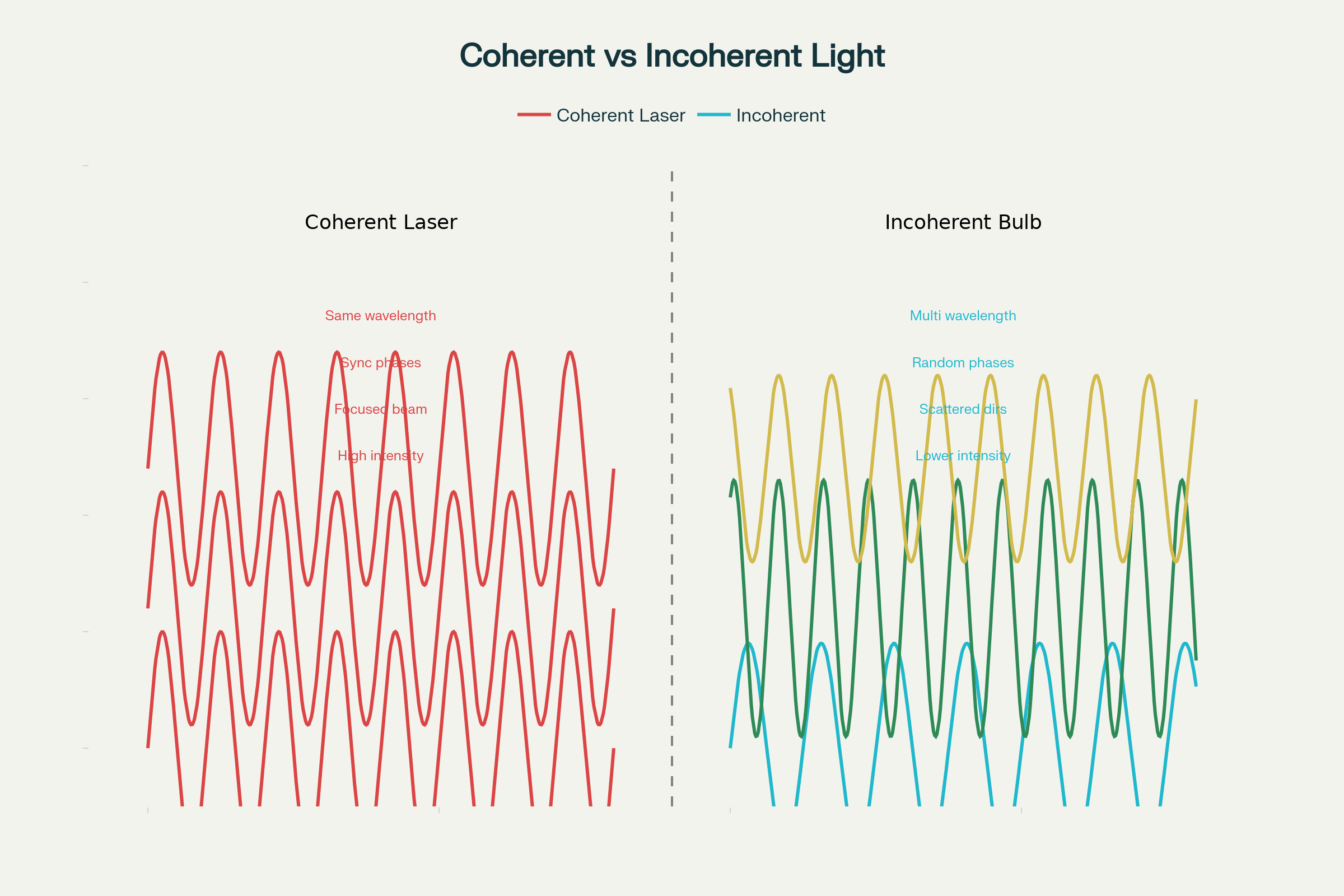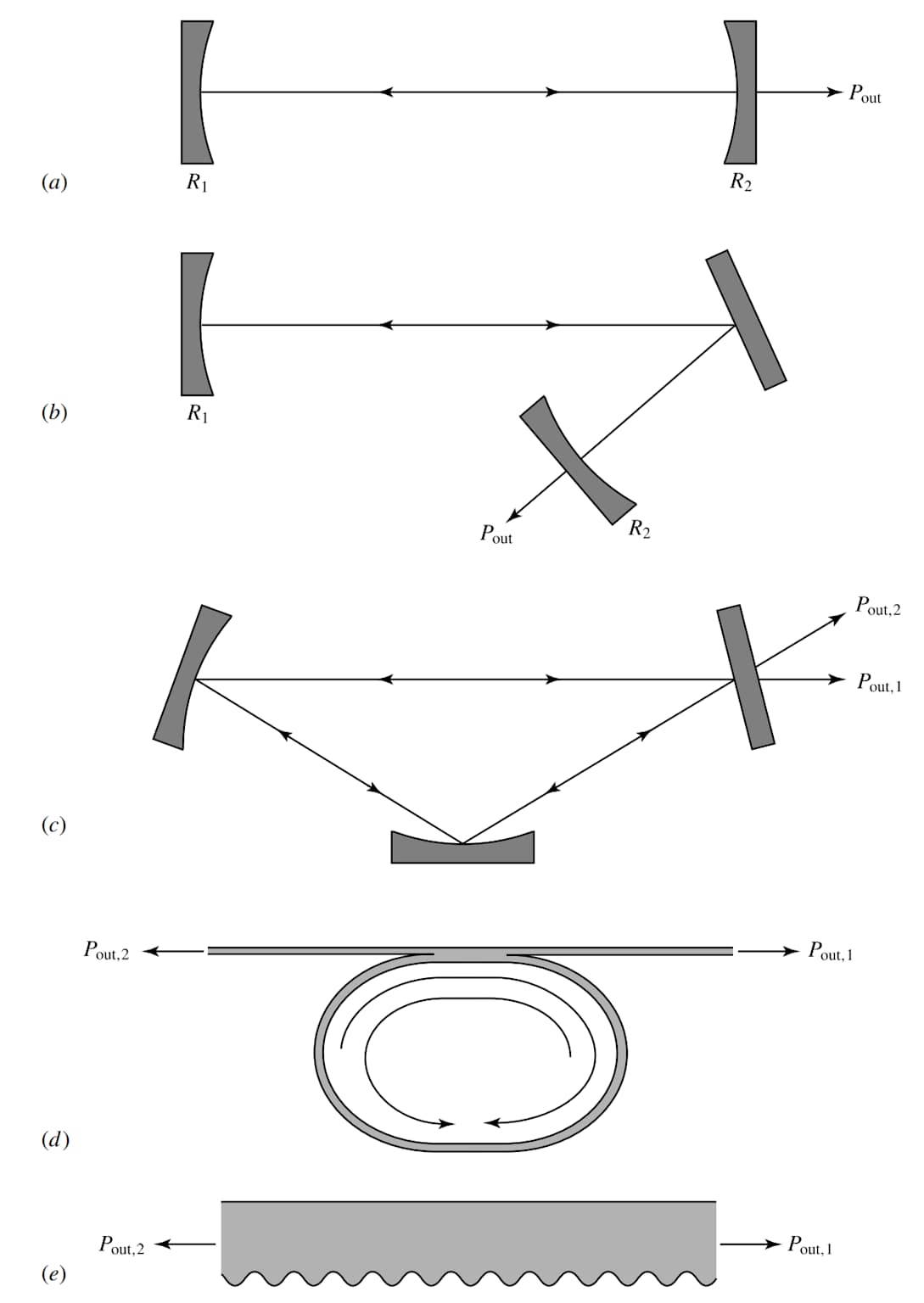Lasers have changed manufacturing, medicine, and more. But how do these devices turn ordinary light into powerful, focused beams? The secret lies in laser amplification—an elegant dance of physics that makes this transformative technology possible.
Unlike scattered, multi-colored light from a bulb, laser light has three key traits: coherent (waves sync perfectly), monochromatic (single color/wavelength), and highly focused (tiny, intense spots).

The difference? How waves act. Ordinary sources (bulbs, sun) emit photons randomly—different wavelengths, phases, directions. This makes warm, diffuse light. Laser light? Photons are identical—same energy, phase, direction.
Laser amplification starts with stimulated emission—a 1917 discovery by Albert Einstein. Here’s how it works: an excited atom meets a photon with the right energy. It drops to a lower level and emits two identical photons—instead of one.
This triggers a cascade: one photon becomes two, two become four, and so on. This exponential growth of identical photons is what makes lasers work—hence the name: LASER (Light Amplification by Stimulated Emission of Radiation).
Here’s the twist: under normal conditions, matter absorbs more light than it emits. Most atoms stay on their lowest energy state (ground state), so absorption wins. To make a laser, we need to flip this.
Population inversion is when more atoms are in an excited state than ground state. This lets stimulated emission take over from absorption—so light amplifies instead of getting absorbed.
Imagine a stadium: everyone usually sits in lower seats (ground state). To make a laser, you need more people in upper seats (excited state) than lower—against their natural urge.
To get population inversion, you need pumping—constant energy to push atoms from ground state to higher levels. There are a few ways to do this:
Uses intense light (like flashlamps) to excite atoms.
Common in solid-state lasers (ruby, Nd:YAG).
Delivers thousands of joules in milliseconds.
Uses electric current to excite gas molecules (via collisions).
Used in gas lasers (helium-neon, CO₂).
Creates controlled electrical discharges in the laser medium.
Uses chemical reactions to make excited atoms.
Less common, but can produce huge energy.
Here’s a problem: atoms fall back to ground state in nanoseconds—too fast to build population inversion. Pumping them is useless if they immediately drop.
The fix? Metastable states—special energy levels where atoms "pause" longer. These states act like batteries, letting excited atoms build up before dropping to ground state. Metastable states last microseconds to milliseconds—thousands to millions of times longer than ordinary excited states. This gives enough time to maintain population inversion for steady laser output.
The 1960 ruby laser (invented by Theodore Maiman) shows these principles in action. The ruby crystal has chromium ions in aluminum oxide—creating an three-level energy system.
Pumping: An xenon flashlamp shoots intense blue/green light (400-550 nm) on the ruby rod.
Rapid Drop: Excited chromium ions fall from the highest level (E₃) to the metastable level (E₂)—no light emitted.
Building Population: Ions pile up in E₂ (metastable state). This creates population inversion vs. the ground state (E₁).
Laser Light: When population inversion is strong enough, stimulated emission takes over. The result? Deep red laser light at 694.3 nm.
Ruby’s metastable state lasts 3 milliseconds—eternity in atomic terms. This gives enough time to build population inversion.

Stimulated emission alone isn’t enough for a practical laser. You need an optical cavity (or laser cavity)—two mirrors at opposite ends of the laser medium.
Light bounces between the mirrors, passing through the gain medium again and again. Each pass triggers more stimulated emission. One mirror is 100% reflective; the other is 95% reflective. This lets some light escape as a useful laser beam.
The cavity makes sure only light going in the right direction gets amplified. Light going other ways is lost. The result? A highly directional, intense beam of coherent light.
Today’s lasers aren’t just lab tools. They’re part of everyday life:
Consumer Tech: CD/DVD players, laser printers, barcode scanners.
Communications: Fiber optic internet, telecom.
Manufacturing: Precision cutting, welding, marking.
Medicine: LASIK, dental work, cancer treatment.
Research: Spectroscopy, interferometry, space exploration.
2024 trends? Higher-power fiber lasers, laser 3D printing, and AI-integrated systems that adapt in real time. The global laser market could hit $17.9 billion by 2030—thanks to more uses in every industry.
Lasers are useful, but their concentrated energy needs caution. Safety classes go from Class 1 (safe) to Class 4 (dangerous—even scattered light can hurt eyes/skin).
Everyday lasers (pointers, barcode scanners) are Class 1 or 2—safe if used right. But industrial/medical lasers need training and safety gear.
Laser amplification looks simple, but it’s a dance of quantum physics, materials science, and engineering. The key steps: population inversion (via pumping), metastable states (for storage), and optical cavities (for amplification). Together, they turn ordinary matter into a light-amplifying machine.
Learning these principles lets us appreciate how lasers work—and why they’re so versatile. From the 1960 ruby laser to today’s fiber lasers and quantum systems, the same physics drives innovation.
As lasers get more powerful, efficient, and smart, these basic conditions still matter. Whether you’re curious about everyday tech or future innovations, laser physics shows how we can control and harness light.
Want to learn more about laser applications in manufacturing? Check out our articles on precision engineering and modern production at codingmachine.net. See how these principles work in real-world solutions!
Contact: Jason
Phone: +8613337332946
E-mail: [email protected]
Add: Hangzhou City, Zhejiang Province, China